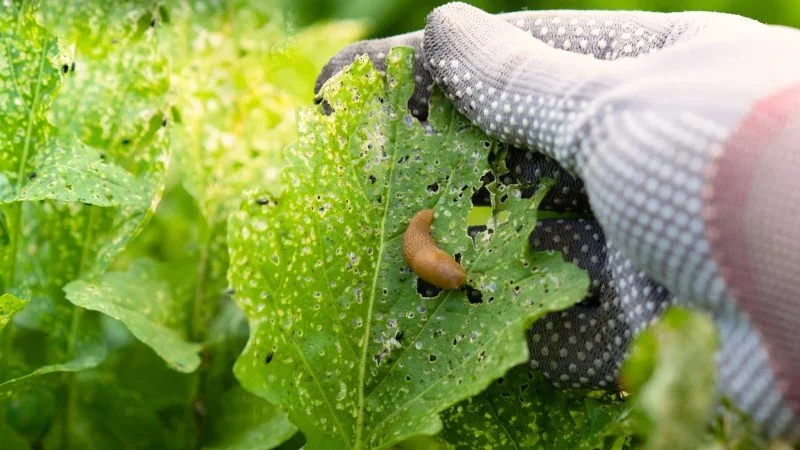
- 1. Rain and Pest Activity Overview
- 2. Why Pests Are More Active After Rain
- 3. Types of Pests That Thrive in Wet Conditions
- 4. How to Prevent Pests After the Rain
- 5. PestControlHub Recommendations
1. Rain and Pest Activity Overview
Have you ever noticed an increase in pest activity after a rainstorm? Whether it's ants marching across your kitchen floor, mosquitoes swarming your backyard, or rodents seeking shelter inside your home, many pests seem to become more active after it rains. But why is this the case? Understanding the link between weather and pest behavior can help you manage and prevent infestations, especially during wet conditions.
In this article, we’ll explore the reasons why pests are more active after rain, what types of pests are most likely to emerge, and how you can prevent them from becoming a nuisance in your home. By understanding the factors that drive pest behavior, you’ll be better equipped to keep your space pest-free.
2. Why Pests Are More Active After Rain
There are several reasons why pests seem to become more active after a rainstorm. Let’s break down the key factors that contribute to this surge in pest activity:

Tri-County Pest Control Inc
HampsteadPender CountyNorth Carolina
15200 US-17 North, Hampstead, NC 28443, USA
2.1. Moisture Drives Pests Indoors
After a heavy rainfall, the ground becomes saturated with water, which can make it difficult for pests like ants, cockroaches, and rodents to find food and shelter outside. Seeking dry refuge, many of these pests will move indoors, where they feel more secure and comfortable. This is why you may notice an uptick in pest activity within your home after it rains, particularly around windows, doors, and basements.
2.2. Rain Washes Away Natural Barriers
Heavy rain can wash away the natural barriers that pests rely on to stay hidden, such as leaves, dirt, and debris. When these coverings are removed, pests like termites and ants become exposed and may move toward shelter, sometimes even inside your home. This is especially true for pests that thrive in moist environments, such as termites, which seek wet wood to feed on.
2.3. Increased Humidity Attracts Pests
Rain increases the humidity in the environment, making it more appealing to many pests that thrive in damp conditions. Mosquitoes, for example, lay their eggs in stagnant water, and the increased moisture after a rainstorm provides ideal breeding grounds. Similarly, insects like silverfish, cockroaches, and spiders are drawn to moist environments where they can find water and food sources more easily.
2.4. Water Puddles Serve as Breeding Grounds
Water puddles and standing water that accumulate after rainstorms create the perfect breeding grounds for certain pests. Mosquitoes are a prime example—they thrive in standing water, where they lay their eggs. The increased presence of water sources following a rainstorm can lead to an explosion in mosquito populations, making outdoor activities less enjoyable and increasing the risk of mosquito-borne diseases.
3. Types of Pests That Thrive in Wet Conditions
Several types of pests are particularly active after it rains due to their attraction to moisture and wet conditions. Let’s look at some common pests that thrive in the aftermath of a rainstorm:
3.1. Ants
Ants are notorious for emerging in large numbers after a rainstorm. The rain can flood their nests, forcing them to search for new places to settle. This is when you might find ants in your kitchen or bathroom, looking for food and shelter. Carpenter ants, in particular, are drawn to wet wood and may invade your home if the rain has caused wood to soften or decay.
3.2. Mosquitoes
Rainstorms create perfect breeding grounds for mosquitoes, which lay their eggs in stagnant water. After the rain, pools of water can collect in various places such as buckets, old tires, and birdbaths, providing mosquitoes with an ideal environment to hatch and reproduce. This leads to a surge in mosquito activity, especially in the days following a rainstorm.
3.3. Cockroaches
Cockroaches are another pest that becomes more active after it rains. They seek out moist environments to escape the wet conditions outside. Cockroaches are particularly drawn to kitchens, bathrooms, and basements, where moisture is prevalent. A sudden rainstorm can drive cockroaches into your home, especially if they have been displaced from their outdoor habitat.
3.4. Rodents
Rats and mice are notorious for seeking shelter during rainy weather. When it rains, their natural shelters, such as burrows or nests, can become flooded. This forces them to move indoors, where they can find warmth, shelter, and food. Rodents are known to enter homes through small gaps or cracks in walls, particularly when searching for a dry place to stay after a storm.
3.5. Termites
Termites are especially active after rain because they are attracted to moist wood. The increase in humidity after a rainstorm can make your home’s wooden structure more appealing to these destructive pests. Termites are drawn to wet wood and may invade the foundation or wooden beams of your home if moisture levels are high.
4. How to Prevent Pests After the Rain
Now that we understand why pests become more active after rain, let’s discuss how to prevent these pests from invading your home:
4.1. Seal Cracks and Gaps
One of the first steps in preventing pests from entering your home after rain is sealing any cracks, gaps, or holes in your walls, windows, and doors. Use caulk to seal small openings and ensure that window screens are in good condition. This will prevent pests like ants, cockroaches, and rodents from sneaking inside.
4.2. Eliminate Standing Water
After a rainstorm, make sure to eliminate standing water around your property. Empty containers that collect rainwater, such as buckets, flower pots, and birdbaths, and ensure that your gutters are clear to prevent water buildup. Reducing standing water will help deter mosquitoes from laying eggs and reduce the overall attraction for pests.
4.3. Maintain a Clean Home
Pests are often attracted to food and water sources in your home. After a rainstorm, make sure to clean up any food crumbs, spills, or water accumulation. Store food in airtight containers, and keep trash bins tightly sealed. This will reduce the likelihood of pests such as ants, cockroaches, and rodents coming into your home in search of a meal.
4.4. Use Pest Control Products
If you’ve already noticed an increase in pests following a rainstorm, consider using eco-friendly pest control products to keep them at bay. Products such as natural repellents, traps, and insecticides can help manage pest populations without harming the environment. Consider consulting a professional pest control service if you experience persistent infestations.
5. PestControlHub Recommendations
If you’re dealing with an increase in pest activity after rain, visit PestControlHub for the best pest control products. We offer a wide range of solutions, from eco-friendly repellents to traps and sprays, to help you keep your home pest-free after a storm.








 Wildlife Resolutions4.0 (443 reviews)
Wildlife Resolutions4.0 (443 reviews) Pest Marshals of Toledo5.0 (2 reviews)
Pest Marshals of Toledo5.0 (2 reviews) LS Rodent Proofing & Pest Control Service5.0 (4 reviews)
LS Rodent Proofing & Pest Control Service5.0 (4 reviews) Best Termite & Pest Control4.0 (16 reviews)
Best Termite & Pest Control4.0 (16 reviews) Varment Guard Wildlife Services5.0 (28 reviews)
Varment Guard Wildlife Services5.0 (28 reviews) Pestban Inc4.0 (394 reviews)
Pestban Inc4.0 (394 reviews) How to Use Monitors to Detect Pest Entry: A Comprehensive Guide
How to Use Monitors to Detect Pest Entry: A Comprehensive Guide How to Predict Which Pests Will Invade Next – Smart Pest Forecasting for the U.S.
How to Predict Which Pests Will Invade Next – Smart Pest Forecasting for the U.S. How to Conduct a Pest Risk Assessment at Home – Expert Guide
How to Conduct a Pest Risk Assessment at Home – Expert Guide How to Block Pest Entry Around Deck Joists: Effective Solutions
How to Block Pest Entry Around Deck Joists: Effective Solutions How to Safely Use Fumigation Methods: A Comprehensive Guide for Homeowners
How to Safely Use Fumigation Methods: A Comprehensive Guide for Homeowners Why Pests Are More Active After Rain: Understanding the Link Between Weather and Pest Behavior
Why Pests Are More Active After Rain: Understanding the Link Between Weather and Pest Behavior